The content of the article
Sweet pepper belongs to the nightshade family, along with chili peppers, cayenne peppers, eggplant, tomatoes and ordinary potatoes (but not sweet potatoes or yams). Their appearance is called Capsicum annuum. This name can be a little confusing, as it is used to denote not only sweet bell peppers, but also many other types of hot peppers, including cayenne, chili, jalapenos and others.
Description
What makes sweet pepper sweet is a combination of two features. Firstly, they contain a small amount of sugar - about 3-4 grams (per 100 g). Even with such a small amount of sugar, it is enough that the bell pepper is a little sweet, as the vegetable either contains a very small amount or does not contain very sharp alkaloids called capsaicin. Capsaicin piquants vegetables. To assess the quantitative content (severity) of pepper, a well-known rating system is used, called the Scovilla pungency scale. Bulgarian peppers are often rated “0” on this scale, and spicy varieties like Trinidad Moruga Scorpio gain 1.2 to 2 million!
One of the relatively new and increasingly popular sweet pepper options in many food segments is mini peppers. As their name implies, these vegetables are only 1/3 the size of a typical sweet pepper. Mini peppers are not just “young” peppers, but unique varieties that are relatively difficult to grow because of their lower resistance to disease.
It is also worth mentioning such a spice as “paprika”. Dried bell peppers are very often used as the main or sole ingredient in this seasoning. Paprika, regardless of its taste, is usually made from ripe and dried peppers, which are crushed into powder. However, its taste depends on the particular vegetable or combination of peppers from which it is made.
Composition
Sweet pepper is not only tasty and versatile, but also very healthy. Of course, this applies to all fruits and vegetables, but if you compare the content of vitamin C in sweet pepper with the content in citrus fruits, then colorful and tasty sweet pepper is the undisputed winner!
Dutch sweet peppers are not only tasty, but also a valuable source of vitamins. Half of one red, yellow or orange Bulgarian fruit provides 65% of the daily requirement for vitamin E and fully satisfies the need for vitamin C. Vitamin E slows down the aging process and keeps the skin youthful. In addition, vitamin E helps protect the body against heart disease, cancer, and Alzheimer's. It also helps strengthen muscles and nerves and improves blood flow.Do not forget about vitamin C, as it is one of the most important vitamins for our immune system.
In addition, bell pepper also contains valuable vitamins, such as:
- B1 (useful for brain function, energy production, protein and digestive system intake).
- B2 (useful for healthy skin, hair, nails and eyes).
- B6 (necessary for metabolism and energy balance).
Also in pepper there are trace elements and minerals important for the human body, such as:
- calcium (good for bones);
- iron and sodium (which regulate the balance of fluids in the body).
Sweet pepper contains a lot of folic acid, which is useful for pregnant women. Therefore, this vegetable ranks first in the list of healthy foods.
Calorie content
Bell pepper is a low-calorie vegetable (25-27 kcal per 100 g), so it can often be seen in the diet of people who want to lose weight.
Beneficial features
- Increases metabolic rate. Studies show that sweet red pepper is great for increasing metabolic rate. This is due to the activation of thermogenesis (heat production by the body), which leads to an increase in metabolic rate. Although sweet bell pepper does not contain capsaicin, which is known to make pepper hot, it has a mild thermogenic effect. This process has been studied and produced very interesting results. It turns out that the acceleration of metabolism occurs without an increase in heart rate and blood pressure, as is usually the case with the use of hot pepper. Therefore, bell pepper is absolutely safe for people with heart problems.
- Good for the eyes. Sweet pepper contains more than 30 different types of carotenoids, including alpha-carotene, lutein, zeaxanthin and lycopene. Carotenoids are a family of phytonutrients that cause red, yellow, and orange color in fruits and vegetables. Carotenoids have been found to act as prophylaxis of eye diseases, and also help fight existing diseases. Studies with sweet pepper have shown that carotenoids can absorb harmful substances that can damage eyeballs.
- Low calorie vegetable. Nutritionists very often recommend adding sweet peppers to your diet in order to speed up the process of losing weight or maintaining it. One bell pepper fruit has approximately 1 gram of fat and only 29 calories. Nutritionists suggest using the vegetable as a snack or as an addition to the main dish. In addition, a small amount of fat contained in pepper provides reliable storage of fat-soluble nutrients.
- Source of potassium. If the body has a low level of potassium, then you need to add bell pepper to your diet. This vegetable of any color is an excellent source of potassium. It is necessary to maintain the correct balance of fluid and minerals in the body. In addition, studies show that it improves muscle function and regulates blood pressure. One sweet pepper fruit contains from 260 to 300 mg of potassium. Sweet peppers also contain fiber, which can also help regulate heart health by controlling cholesterol levels.
- It contains a lot of vitamins. Sweet peppers are an excellent source of vitamin A, which is essential for eye health. One sweet pepper fruit contains a daily dosage. Sweet pepper has a high level of vitamin C, which supports tissue health and the normal functioning of the immune system. One sweet pepper fruit also provides more than 100% of the daily intake of vitamin C. Pregnant women or women who hope to become pregnant should also add sweet pepper to their diet.This vegetable contains folate, which supports red blood cell function and helps prevent certain types of birth defects in the fetus. It is also worth noting that some studies have shown that folic acid can act as a prophylaxis for colorectal cancer. Sweet pepper is also a source of vitamin K, which is essential for blood coagulation.
- For diabetics. Diabetics must follow strict dietary rules and think twice before putting anything on their plate. And this limits the intake of various fruits and vegetables. However, adding bell pepper to the diet will not only help control the level of glucose in the blood, but also reduce the risk of various health complications. The anthocyanins present in sweet pepper inhibit the activity of two key digestive enzymes - alpha glucosidase and lipase. The enzyme alpha-glucosidase promotes the breakdown of carbohydrates to glucose, while pancreatic lipase promotes the breakdown of fats into fatty acids. If the absorption of carbohydrates and lipids slows down, the concentration of blood sugar and lipids also decreases, which reduces the risk of hyperglycemia and helps control blood glucose levels.
- Oncology Prevention. Red pepper has a significantly higher level of nutrients than green pepper, including lycopene, which helps prevent cancer of the prostate, cervix, bladder, and pancreas. Being rich in antioxidant and anti-inflammatory properties, bell pepper can act as an anti-cancer agent. The risk of cancer is increased due to chronic excessive inflammation and unwanted oxidative stress. These factors can be compensated by regular intake of phytonutrients with antioxidant and anti-inflammatory properties. According to studies, bell peppers contain phenolic or flavonoid acids, which are important antioxidant components of a plant-based diet.
- For heart. Red bell pepper is rich in lycopene, which makes it a healthy product for the heart, while green bell pepper is known as a good source of fiber. Bell peppers are rich in vitamin B6 and folate, which help lower homocysteine levels (high levels of homocysteine increase the risk of heart disease).
Contraindications

Bell pepper is not recommended for people who have diseases such as:
- stomach diseases;
- liver disease
- renal dysfunction;
- high blood pressure;
- impaired cardiac function;
- increased nervous irritability.
The use of bell pepper
Bell pepper is considered a versatile vegetable. It is tasty, healthy both in raw and boiled form. It can be part of a salad, or act as an ingredient for salsa, guacamole or hummus. Sweet peppers can also be eaten fried. Since there is not enough protein in bell peppers, it can be combined with foods high in protein for a complete meal.
Video: what is good for bell pepper

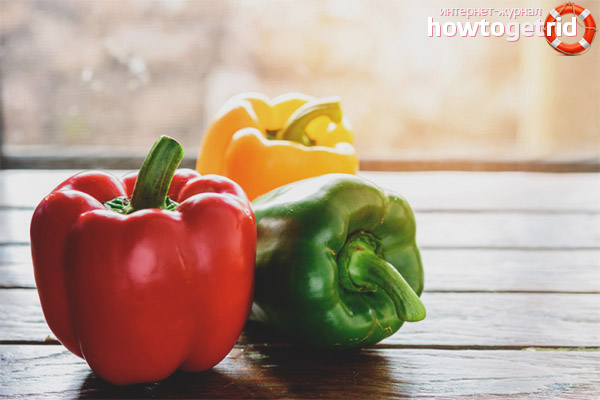

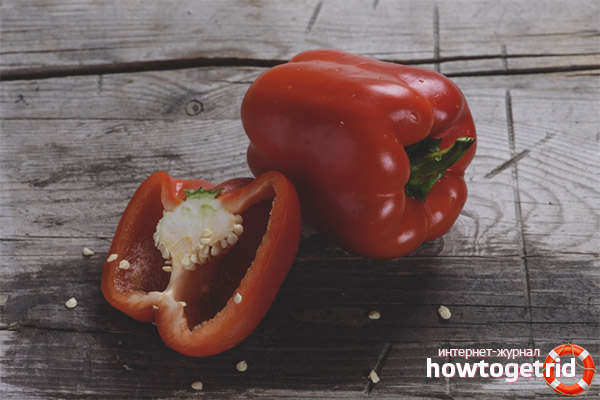

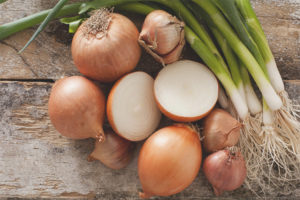
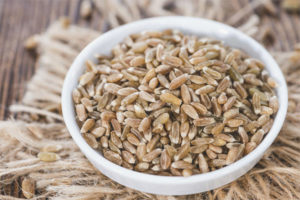
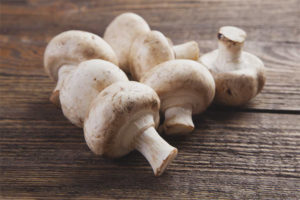

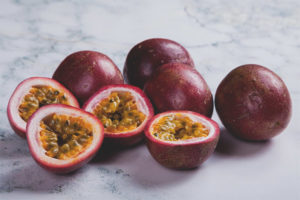


Submit
I love pepper! I like to eat it just like an apple, without heat treatment. Well, of course, I’m doing Lecho for the winter.